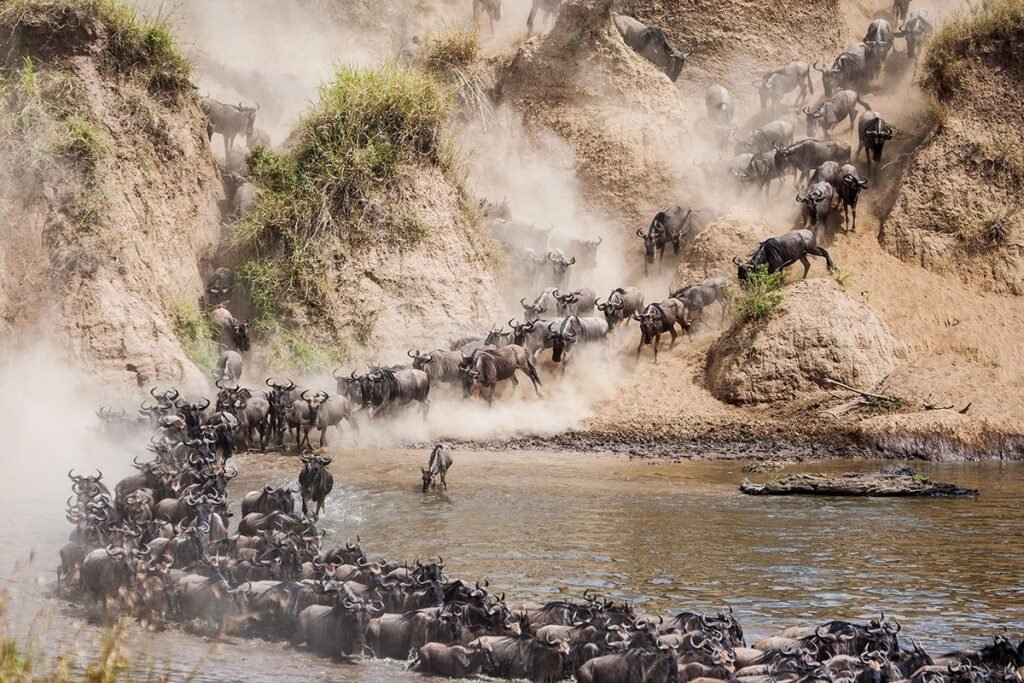Stretching across the vast plains of northern Tanzania, the Serengeti is a place of breathtaking beauty and untamed wilderness. Known as “Siringet” by the Maasai people, which translates to “wide endless plains,” the Serengeti has become synonymous with the ultimate African safari experience. Recognized as a UNESCO World Heritage Site and a biosphere reserve since 1981, it remains one of the oldest, largest, and most celebrated national parks on the continent.

The Serengeti is renowned for its astonishing wildlife population, boasting the highest concentration of wild animals on the planet. It’s not just a haven for animal enthusiasts; this iconic park is the last stronghold for the world’s annual mammal migration, a spectacle like no other. This migration involves over two million wildebeest, zebras, and gazelles, trekking an 800-kilometer journey through the Serengeti and the neighboring Masai Mara ecosystem in Kenya. The journey is perilous, as herds must navigate predator-packed plains and crocodile-infested rivers, particularly during the dramatic river crossings at the Mara and Grumeti Rivers.

Beyond the migration, as the Serengeti is home to the Big Five — lions, leopards, elephants, buffalo, and the elusive black rhinoceros — the park is also teeming with other wildlife, including giraffes, cheetahs, warthogs, and an impressive array of antelope species. Its predators and prey interactions are unparalleled, and visitors have the chance to witness nature’s raw beauty up close. Birdwatchers, too, will find their paradise here, with over 530 recorded bird species, a quarter of which migrate annually to or through the park.

But it’s not just the wildlife that captivates — Serengeti’s landscapes are a marvel in their own right because of the sweeping grasslands dotted with rocky outcrops, or ‘koppies’ to create a scenic backdrop to the wildlife spectacle. To the west, the Grumeti and Mbalageti Rivers snake through riverine forests, leading toward the shores of Lake Victoria. In the north, the Lobo Hills rise majestically, and the Mara River becomes the stage for the unforgettable drama of the migration crossings.

The Serengeti’s climate is generally mild, with daytime temperatures averaging 27°C (81°F). However, nights can get chilly, especially during early morning game drives. The best time to visit depends on the activities you plan, though the dry season, from June to October, is often preferred for its clearer skies and minimal rainfall. The wet season, which peaks between March and April, brings lush greenery but can also make some areas harder to access.




